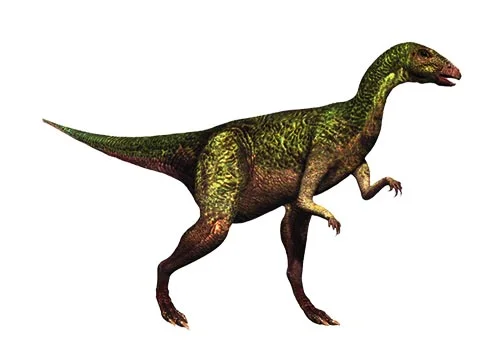Dryosaurus (Oak lizard)

Dry-o-sore-us
Othniel Charles Marsh – 1894
Herbivore
Estimated 2-4 meters long
Euornithopod
D. altus (type), D. elderae
Tanzania, USA, Morrison formation
Late Jurassic, 156-145 million years ago
Dryosaurus Facts
Dryosaurus, meaning “oak lizard,” is a genus of ornithopod dinosaur that lived during the Late Jurassic period, approximately 156 to 145 million years ago, in what is now North America.
Dryosaurus was a small, fast-running dinosaur that was adapted for life on the ground. It had long, powerful hind legs and a slender body, which allowed it to move quickly and easily through its environment. Its front legs were much shorter and less powerful than its hind legs, indicating that it was a bipedal dinosaur that primarily walked and ran on two legs.
One of the most distinctive features of Dryosaurus was its long, narrow tail, which likely played a role in balancing the dinosaur as it ran. It had a toothless beak and leaf-shaped teeth, suggesting that it was a herbivore that fed on a variety of vegetation.
The discovery of Dryosaurus has provided important insights into the evolution and behavior of ornithopod dinosaurs during the Late Jurassic period. Its fast-running speed and herbivorous diet suggest that it may have been adapted for life in a grassland environment, where it may have lived in large herds to avoid predators.
Today, Dryosaurus is one of the best-known and most-studied ornithopod dinosaurs, and its fossils have been found at several sites throughout North America. It remains a fascinating and important dinosaur for scientists and enthusiasts alike.



